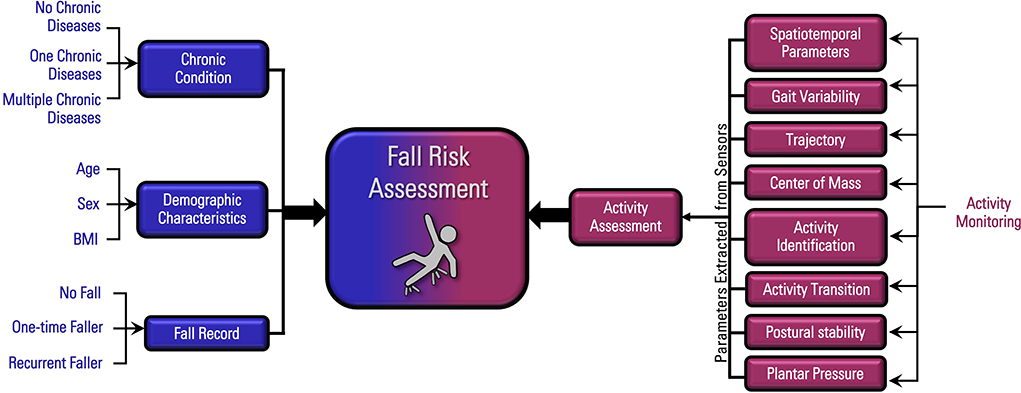The Best Strategy To Use For Dementia Fall Risk
Dementia Fall Risk Fundamentals Explained
Table of ContentsDementia Fall Risk Fundamentals ExplainedDementia Fall Risk Can Be Fun For EveryoneEverything about Dementia Fall RiskDementia Fall Risk for Beginners
A fall threat analysis checks to see how most likely it is that you will certainly fall. It is primarily provided for older adults. The assessment normally consists of: This includes a collection of questions regarding your overall health and if you have actually had previous falls or troubles with equilibrium, standing, and/or walking. These tools examine your toughness, equilibrium, and stride (the means you stroll).Interventions are suggestions that may minimize your threat of dropping. STEADI consists of 3 steps: you for your danger of dropping for your danger elements that can be boosted to try to avoid falls (for instance, equilibrium problems, impaired vision) to minimize your risk of dropping by using efficient strategies (for instance, offering education and resources), you may be asked numerous concerns consisting of: Have you fallen in the previous year? Are you worried concerning falling?
You'll sit down once more. Your supplier will examine for how long it takes you to do this. If it takes you 12 secs or more, it may mean you are at greater risk for an autumn. This test checks stamina and balance. You'll rest in a chair with your arms crossed over your breast.
The positions will certainly obtain more challenging as you go. Stand with your feet side-by-side. Relocate one foot halfway onward, so the instep is touching the big toe of your other foot. Relocate one foot fully in front of the various other, so the toes are touching the heel of your various other foot.
4 Easy Facts About Dementia Fall Risk Explained
Many drops occur as an outcome of numerous contributing aspects; as a result, handling the threat of falling begins with identifying the elements that add to drop threat - Dementia Fall Risk. Several of one of the most appropriate danger elements consist of: Background of prior fallsChronic clinical conditionsAcute illnessImpaired stride and equilibrium, lower extremity weaknessCognitive impairmentChanges in visionCertain risky medications and polypharmacyEnvironmental elements can also raise the danger for drops, including: Inadequate lightingUneven or harmed flooringWet or unsafe floorsMissing or damaged handrails and get barsDamaged or poorly fitted tools, such as beds, wheelchairs, or walkersImproper use of assistive devicesInadequate guidance of the people living in the NF, consisting of those who show aggressive behaviorsA successful fall threat monitoring program calls for a complete scientific analysis, with input from all members of the interdisciplinary team

The treatment strategy need to likewise include treatments that are system-based, such as those that advertise a safe setting (ideal lighting, hand rails, get hold of bars, etc). The efficiency of the interventions ought to read the full info here be evaluated regularly, and the treatment plan modified as necessary to reflect modifications in the fall risk analysis. Executing a loss threat administration system utilizing evidence-based finest practice can decrease the occurrence of falls in the NF, while limiting the possibility for fall-related injuries.
The 45-Second Trick For Dementia Fall Risk
The AGS/BGS guideline suggests screening all adults aged 65 years and older for loss danger yearly. This screening includes asking patients whether they have actually dropped 2 or more times in the past year or sought clinical attention for a loss, or, if they have not dropped, whether they really feel unsteady when walking.
Individuals that have dropped as soon as without injury ought to have their balance and stride reviewed; those with stride or equilibrium irregularities ought to receive additional analysis. A background of 1 autumn without injury and without gait or balance troubles does not necessitate further assessment beyond continued yearly autumn threat screening. Dementia Fall Risk. A fall threat assessment is called for as part of the Welcome to Medicare exam

Little Known Facts About Dementia Fall Risk.
Recording a drops background is one of the quality signs for loss prevention and monitoring. Psychoactive medicines in certain are independent forecasters of falls.
Postural hypotension can usually be eased by decreasing the dosage of blood pressurelowering drugs and/or quiting medicines that have orthostatic hypotension as a negative effects. Use of above-the-knee assistance hose pipe and sleeping with the head of the bed elevated might also reduce postural decreases in blood stress. The recommended components of a fall-focused physical exam are received Box 1.

A TUG time greater than or equivalent to 12 secs recommends high loss danger. Being go to this web-site not able to stand up from a chair of knee elevation without using one's arms indicates enhanced fall danger.